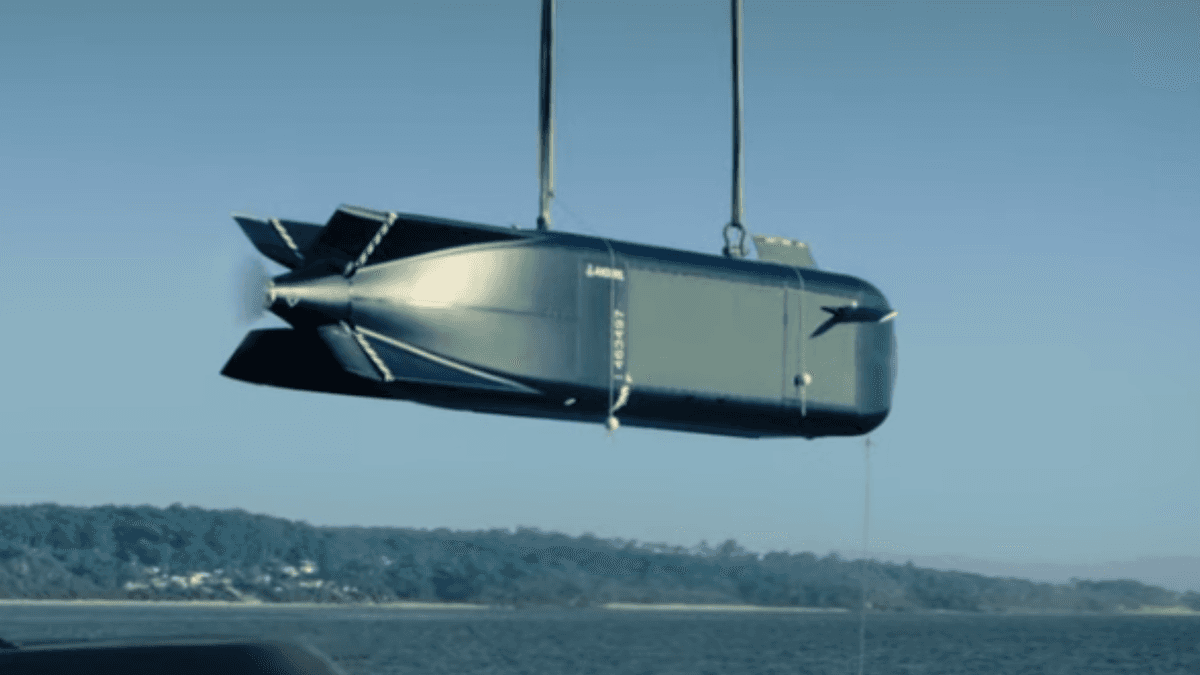La compañía estadounidense ANDURIL Industries anunció que su prototipo en desarrollo, el Dive-XL “Extra Large Autonomous Undersea Vehicle” (XL – AUV), ha alcanzado un nuevo récord en una travesía de 100hs sin reabastecerse. Desde hace tiempo, los Dive-XL están siendo sometidos a rigurosos ensayos en el mar, tanto en EEUU como en Australia. La Armada de este último país, tiene previsto incorporarlos en su programa “Ghost Shark” para el control soberano de su litoral marítimo. Este reciente ensayo de 100hs, es un avance del test previsto para el 2025, en que el Dive-XL debería alcanzar las 1.000 millas náuticas.
Anduril Industries has announced that its commercial extra-large autonomous undersea vehicle (XL-AUV) Dive-XL has achieved the feat of 100 hours single voyage.
Anduril says this is the longest underway voyage for a vehicle of this class.
The American defense technology company’s Dive-XL underwater drones are at sea nearly every day in Australia and the United States – where they undergo testing and trial runs.
The Dive-XL is also being missionized into a sovereign capability for the Royal Australian Navy’s Ghost Shark program.
The company also reported that the US is also showing interest in its capabilities and is looking at ways in which it can be used in a complementary capability to both crewed and uncrewed naval vessels.
Dive-XL’s USP and planned upcoming milestones for the drone
Anduril states that this recent feat of 100 hours dive will be followed by the Dive-XL attempting a goal of a fully submerged 1,150 mile (1,000 nautical miles) mission. The company plans to conduct this trip in the first half of 2025.
This 1,150 mile trip will be followed a full-scale, multi-thousand mile range mission undertaken by the vehicle.
The company states that Dive-XL is designed to operate undersea for the entirety of its missions, thanks to its all-electric powertrain. This is in contrast to the hybrid unscrewed submarines which require frequent contact with the surface.
“The longer an XL-AUV can stay submerged, the more operational flexibility it provides its commanders. Dive-XL’s ability to remain underwater for weeks without surfacing or intervention ensures it can operate undetected, extend its range, and deliver payloads in contested maritime environments,” Anduril said in the press release.
The autonomy and modularity can give the much needed advantage to mission coordinators in case of contested environments and war-like situations.
The Dive-XL is designed with modular payloads, which gives it versatility and adaptability for various mission sets. It is capable of carrying up to three payloads at a time, or one extra large payload.
It also allows operators to rapidly swap out and integrate different payloads — ranging from sensors and communications packages to ISR, strike and other capabilities – on the underwater drone.
Moreover, Dive-XL’s open-systems architecture ensures compatibility with third-party payloads, empowering operators to continuously upgrade and customize the platform as new technologies emerge.
Anduril says that it is equipping the Ghost Shark fleet with advanced, classified mission payloads for Australia’s defense needs. It hopes that these can also be applied to address unmet U.S. requirements.
Cost and flexibility benefits
The XL-AUV is designed in such a fashion that it can be launched, employed, and recovered by warfighters with ease using minimal infrastructure and heavy equipment – both at the sea or on the shore. It is designed to fit inside standard 40 feet shipping containers.
Further, Anduril also says that modular platform like Dive-XL is comparatively quite cheap to manufacture and deploy. It costs substantially less than crewed submarines, and multiple units can be made within a short period of time.
As per Anduril, its modular design is freely flooded, relying on smaller, commercial off the shelf pressure vessels to house critical systems like navigation, communications, and batteries.
“The core vehicle is constructed from affordable and commercially available marine grade materials such as aluminum and fiberglass. This architecture reduces complexity, lowers costs, and makes Dive-XL highly manufacturable with resilient supply chains across the globe,” the company said.
The company is carrying out testing in Australia and the US to ensure it meets all requirements. Along with the Australian government, it plans to have the first production unit in the sea by the end of the next year.


